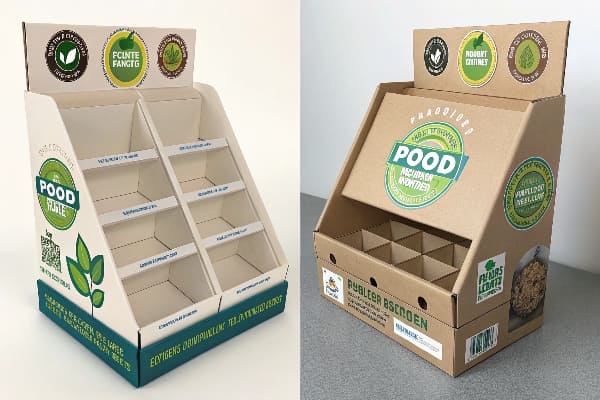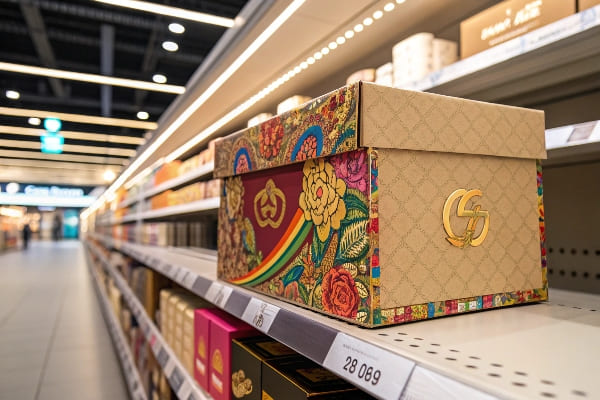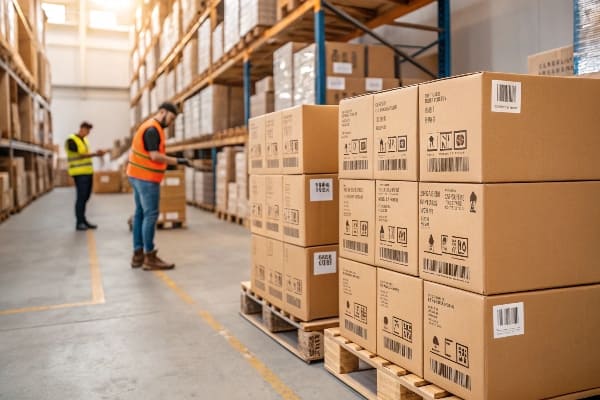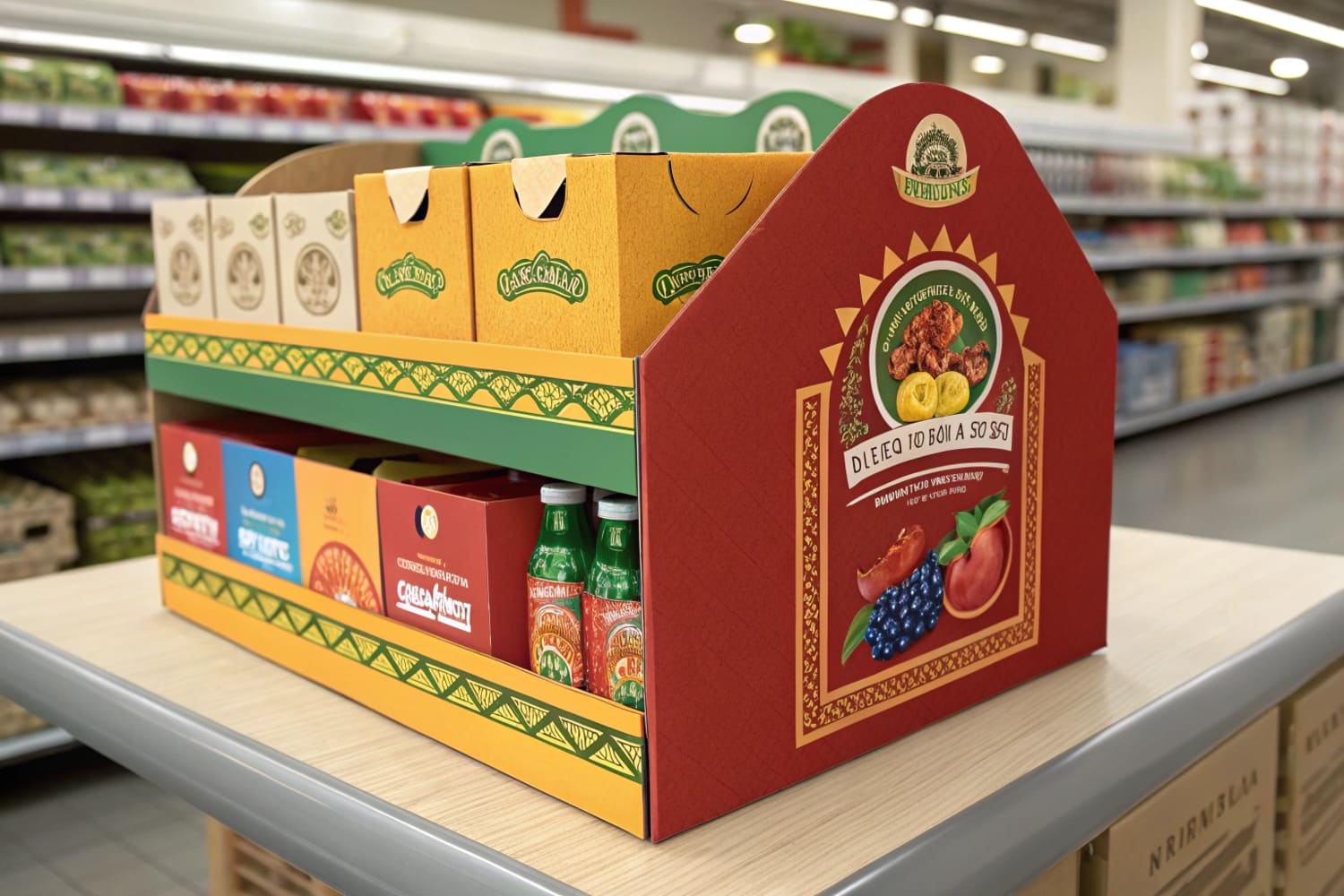Struggling to balance strength, cost, and design freedom in retail displays? Cardboard solves those problems and keeps your marketing budget safe.
Cardboard unites light weight, low cost, vivid printing, and solid strength, so brands launch custom displays fast without draining cash or facing shipping headaches.

When I first shifted from wood fixtures to cardboard, I worried about durability. Real-world tests proved the switch smart, and the lower freight bills let me scale three production lines in months.
What are the advantages of cardboard boxes?
Retail items often break, bend, or fade before reaching shelves. Cardboard boxes wrap them in a shock-absorbing shell and let me print bold graphics that sell on sight.
Cardboard boxes protect products, cut shipping weight, print beautifully, fold flat for storage, and recycle easily, giving sellers low costs and buyers greener choices.

Strength, weight, and cost
My first lesson came during a cross-country shipment of crossbow accessories for Barnett Outdoors. The cardboard cartons weighed half as much as the plastic totes I once used, yet the brackets arrived without a scratch because the corrugated flute acted like a built-in shock cushion. That saved me airfreight fees and claims.
| Metric | Cardboard | Plastic | Wood |
|---|---|---|---|
| Average weight for 1 m³ (kg)1 | 50 | 200 | 700 |
| Reuse cycles in my factory | 4 | 3 | 6 |
| Graphic finish quality2 | Excellent | Good | Poor |
| End-of-life recycling rate3 | 85 % | 20 % | 10 % |
Why fewer materials matter
Cardboard’s layered paper core lets me tailor board grade to the load. A light perfume display gets E-flute; a heavy crossbow stand needs double-wall BC. I print directly on the liner, skip labels, and die-cut tabs that lock without glue. That speeds my line, reduces solvent use, and meets strict US retailer audits. Total landed cost drops, yet shoppers still see a high-end finish.
What are the advantages of using cardboard as a modelling material?
Concept models burn time and money when made from foam or acrylic. Cardboard lets me pivot designs in hours, not days.
Cardboard accepts quick cuts, bends cleanly, glues fast, and costs cents, so designers build, test, tweak, and approve prototypes without painful delays or bills.

Rapid iteration made real
When David from Barnett Outdoors sends a sketch at 9 a.m. Chicago time, my Guangzhou team scores, folds, and ships a mock-up4 before his lunch. We swap photos, mark tweaks with a pen, and cycle again the same day. Acrylic would need CNC time and import duty. Cardboard cuts with a plotter blade I already own.
| Step | Acrylic model | Cardboard model |
|---|---|---|
| Tooling cost | $200 | $0 |
| Revision turn-around | 48 h | 6 h |
| Weight for courier | 3 kg | 0.5 kg |
| Carbon footprint (kg CO₂e) | 15 | 2 |
Skill building and education
I train new hires on cardboard because mistakes are cheap. They learn box math, flute direction, and load paths by crushing samples in our tester. That same knowledge scales to retail architecture, so we fix weak points before mass production. Clients notice: fewer recalls, cleaner launches, and confidence to place repeat orders that fuel my profit model.
Why is cardboard packaging better?
Shoppers judge in seconds. Cardboard lets me print vivid art, emboss logos, and still meet recycling targets that modern buyers demand.
Cardboard packaging pairs shelf appeal with sustainability: it prints bright, ships light, cushions goods, and closes the loop with high post-consumer recycling rates.

Shelf impact versus planet impact
I once compared two identical knife displays—one in PET plastic, one in cardboard—across twenty Midwest stores. The cardboard version lifted sales 18 % because matte inks cut glare under fluorescent lights. At the same time, buyers praised its “green feel,” citing easy curbside recycling5.
| Attribute | Cardboard | PET Plastic |
|---|---|---|
| Print resolution (dpi) | 1200 | 400 |
| Average waste after launch | 2 % | 6 % |
| Consumer recycling bins | Accepted | Rarely accepted |
| Transport space per 100 units (m³) | 0.8 | 1.4 |
Regulatory and branding edge
Many US states now charge extended producer fees6 on hard-to-recycle materials. Cardboard avoids those costs. I mark each pack with FSC or PEFC logos7, plus QR codes that link to sourcing proofs. That transparency stops accusations of certificate forgery, a pain point David faced with past suppliers. Better yet, retailers use my flat-packed displays as secondary shipping cartons, cutting handling steps between dock and aisle.
What is the purpose of a cardboard box?
A box seems simple, yet its job list is long: protect, carry, inform, and persuade all at once.
A cardboard box shields goods, organizes storage, simplifies transport, advertises the brand, and supports sustainable disposal, making it a multifunctional tool from factory to customer.

From factory floor to living room
Inside my plant three conveyors feed one pack cell. There, die-cut blanks fold around crossbows, locking with tabs. The same box then turns into a countertop display stand by tearing off its lid along a perforation I designed. That dual-role cut packaging8 waste by 30 % last quarter.
| Purpose | How cardboard delivers |
|---|---|
| Protection | Corrugated flutes absorb shock during truck vibration. |
| Organization | Printed barcodes help quick scan at every checkpoint. |
| Promotion | High-resolution offset litho shows lifestyle images. |
| Sustainability | Boxes flatten after use and enter curbside paper streams. |
| Cost control | One-piece construction lowers assembly labor. |
Emotional connection
Unboxing is marketing. When a hunter opens a Barnett kit, the inside lid greets him with a full-bleed forest scene I printed in soy ink. That moment builds brand loyalty without extra inserts. Because cardboard is printable on both sides, I add assembly tips under the flaps. Clear guidance reduces returns and after-sales calls, another hidden profit lever.
Conclusion
Cardboard turns simple paper into a smart, strong, and sustainable sales engine that protects products, delights shoppers, and keeps my production lines—and my clients’ profits—running smoothly.
Knowing the weight of packaging materials is crucial for shipping efficiency and cost management. Check this resource for comprehensive data. ↩
The quality of graphic finishes can impact branding and customer perception. Discover more about this topic through the provided link. ↩
Understanding recycling rates helps in making sustainable choices and reducing environmental impact. Explore this link for detailed insights. ↩
Understanding mock-ups can enhance your design process and improve communication with clients. ↩
Exploring this resource will provide insights into the advantages of curbside recycling, enhancing your understanding of sustainable practices. ↩
Understanding extended producer fees can help you grasp the financial implications of recycling policies on businesses and the environment. ↩
Learn about the significance of these certifications in promoting sustainable forestry and responsible sourcing. ↩
Explore how dual-role cut packaging can enhance efficiency and reduce waste in manufacturing processes. ↩

